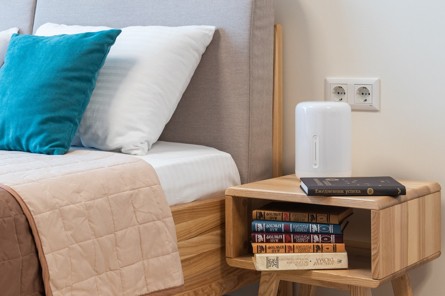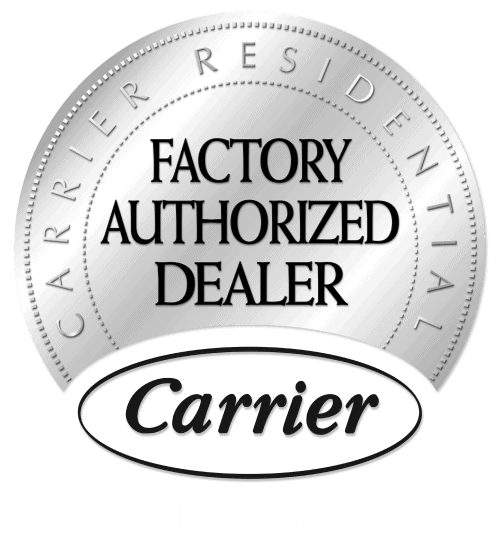Air purifiers are great for removing particles and pollutants from your home’s air that may trigger an allergic reaction or make breathing difficult, but not everyone knows how to tell if they’re working optimally and at full efficiency.
Many assume that most air purifiers work just fine as soon as you install them, but that’s not true!
There are many reasons why air purifiers might not be working as well as you’d expect. And even though you may not notice a big change in the air quality, this puts you at risk of poor indoor air quality, which could lead to asthma and other allergies
In this article, we’ll take a look at the most common problems with air purifiers and how to tell if your air purifier is working as it should
How Do I Know if My Air Purifier is Working
Check If Air Filter Is Working
The first thing to check when trying to figure out your air purifier’s effectiveness is its filter.
If you have a HEPA filter, then you should be able to see dirt particles through the filter itself. But if there isn’t anything visible outside the filter, then it means that your air purifier has probably stopped filtering the air. This is because the filter is designed to trap dust particles,
You should consider changing the filter at this point. It’s best to get new filters yearly since they tend to become clogged over time.
But if you don’t want to buy a new filter right now, you can still use the same one for another couple of months. Just remember to clean the filter regularly and replace it once it starts getting dirty.
Test Your Air Purifier’s Air Flow Rate
If your air purifier doesn’t have an air flow rate indicator, test it yourself. A great way to know how to test the air in your home is by observing the airflow of your air purifier.
Turn the air purifier on and stand close to it. You should feel the fan pulling in and blowing out air. Then get a piece of paper, put it in front of the purifier, and feel the paper. If you feel air blowing on it and no weird noise from the fan, it means the purifier is working.
You should know that your air purifier is designed to work seamlessly, so if you notice the fan is making any strange noises, then you need to contact your local IAQ expert to find out what’s wrong.
Professional IAQ Testing
It’s usually recommended to perform Professional IAQ testing every six months to a year, depending on the size of your house.
A professional IAQ tester will be able to spot problems like mold growth and humidity levels, which indicate a fault in your air purifier. They also have access to special equipment to measure things like carbon monoxide levels, radon gas levels, and more.
After the inspection, the professional will provide you with a report detailing everything that was found during the air quality test. This includes recommendations for improvements and maintenance. It’s essential to follow these recommendations if you want to maintain healthy indoor air quality.
Using Chemical Test Kits
If you’re unsure about your air purifier’s effectiveness, you should consider purchasing a chemical test kit. These kits allow you to easily identify pollutants like dust mites, mold, and other organic particles.
Chemical test kits work by turning off your air purifier for a couple of hours and conducting the test according to the instructions included in the test kit.
However, you shouldn’t rely on this first result, So go ahead and turn on your purifier, ensuring all your windows are closed. After waiting for at least 24 hours, take your second reading. This will give you a more precise result than if you had only tested after a couple of hours.
This method works best for large rooms. However, it’s still a convenient option for smaller spaces.
Using an Air Quality Monitor
An air quality monitor measures air pollutants in real-time, providing instant feedback on whether your air purifier works well enough to keep your indoor air clean. They are easy to read and understand and include instructions for proper operation.
To use an air quality monitor to check the performance of both whole-house air purifiers and portable units, simply turn off your air purifier and take a reading with the monitor. Next close all your windows and doors and wait for a few minutes before taking another reading.
If you notice spikes in pollutant levels, it could mean your air purifier isn’t providing clean air to your home. To fix this problem, you can turn off your air purifier and replace its filter.
Once you’ve replaced the filter, turn your air purifier back on and wait an hour to ensure the air quality monitor shows normal levels again. If the problem persists, you should replace your air purifier.
Air Purifier Maintenance Tips
An air purifier is a great investment, but it must be maintained properly to work effectively. While most models require minimal maintenance, there are a few things that you can do to extend their lifespan and keep it running smoothly.
1. Changing The Filters
Changing the air filters in your air purifier every three months ensures fresh air flows through the system and keeps it operating efficiently. Many air purifiers come with two different types of filters: HEPA and activated carbon filters.
HEPA filters trap 99% of airborne particles, while activated charcoal absorbs odors and gases. Both filters help remove allergens, pollen, pet dander, smoke, and other irritants from the air.
2. Adjusting The Settings
Adjusting your air purifier’s settings allows you to control how much airflow it produces and how often it cleans itself. Some models have pre-programmed settings, while others offer flexible options.
3. Replacing The Motor
Replacing the motor in your air purifier can increase its efficiency and reduce energy costs. It also ensures your unit operates smoothly and doesn’t break down prematurely.
4. Checking For Leaks
Checking for leaks around your air purifier is important because it lets you know when parts wear out or need replacing. A leaky seal will let dust and dirt into the system, which can cause damage over time.
5. Keeping Up With Air Quality Monitoring
Monitoring air quality is essential to maintaining healthy indoor air. Regular checks with an indoor air quality monitor allow you to see if pollutants are building up in your home. This information can help you identify problems with your air purifier before they become serious health issues.
Hire An Indoor Air Quality Expert Today
If you want to maintain good indoor air quality, hire an expert who knows the best ways to run an air purifier test and keep your home free from harmful contaminants. Hurliman IAQ experts can provide tips on how to tell if an air purifier is working and perform regular maintenance to avoid costly repairs. So don’t hesitate – contact us today!






